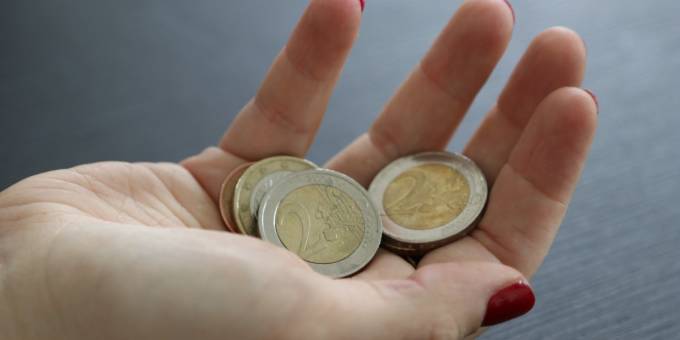
Your guide to understanding the policy rate in France
Let’s unpack the taux directeur—aka the policy rate. Understand how it affects your daily life in France with this simple guide.
5 min read
Every country uses some sort of reference tool to underline its stance on monetary policy. In France, this is the taux directeur, or policy rate. This rate directly impacts spending and saving money in France, so let’s take a look at what it really means.
The central bank policy rate—a definition
The central bank policy rate is the overnight rate, or interest rate, set by the central bank for lending money to commercial banks, or for paying the value of deposits. If that still sounds confusing, hang in there. Let’s unpack what a central bank is next, and then you’ll have a better understanding of how policy rate fits in with everything.
What is a central bank?
A central bank is a bank that belongs to the state, or group of states. For example, in the EU, monetary policy is regulated by the ECB, the European Central Bank. Its role is to:
- Decide on the monetary policy for the country or countries
- Issue banknotes
- Lend money to banks in emergencies
The central bank sits at the top of the banking system. Essentially, it’s the “banks’ bank.” The central bank lends money to commercial banks (banking organizations like N26, or other traditional banks you’re familiar with). Every commercial bank must have an account with its country’s central bank. So, if it needs liquidity, it can borrow money from the central bank—or, on the other hand, if it has excess liquidity, it can deposit that money with the central bank, just as you’d do with the money your bank holds for you.
And in the same way banks charge an interest rate when they lend you money, or pay you interest when you save money with them, the central bank sets a borrowing or interest rate for commercial banks. This is called the policy rate.
Banking basics

The 3 different types of policy rates
Got a clearer picture in your head now? Great. Now let’s break it down even further. Central banks apply three policy rates:
- The refinancing rate (the most well-known rate)
- The discount rate
- The deposit interest rate
The refinancing rate
The refinancing rate (or “refi rate”) is the rate applied to banks borrowing money from their central bank. If the central bank decides to increase the refinancing rate, the cost of borrowing for commercial banks goes up. This increase is reflected in borrowing rates set by commercial banks for their customers. Households and businesses then get discouraged from borrowing money, as it’s more expensive to do so than it was when the refinancing rate was lower.
What’s the impact of the refinancing rate on the economy? The decision to increase the refinancing rate serves to limit the production of money, which is what causes price increases (inflation). But to counter a decline in growth, the central bank needs to encourage households and businesses to consume and bring in more money, particularly through bank loans. So it responds by lowering its refinancing rate, which in turn pushes commercial banks to lower their rates with their customers.
The discount rate
The discount rate, also known as the marginal lending rate, is the rate central banks charge when they lend money to commercial banks in an emergency. This happens when a bank needs short-term liquidity and can’t borrow money on the foreign exchange market, due to financial difficulties that cause mistrust among other banks.
What’s the impact of the discount rate on the economy? It helps uphold the banking system in the event of a severe financial crisis, as happened in 2007 with the subprime crisis.
The deposit interest rate
The deposit interest rate, also known as the deposit facility rate, is the rate commercial banks are paid when they deposit cash into their account with the central bank.
What’s the impact of the deposit interest rate on the economy? This rate’s variability is such that it can influence household savings and consumption. If the rate is low, commercial banks are encouraged not to deposit cash, and instead lend more to their customers. Households and businesses will be more inclined to borrow and therefore consume, which has the effect of generating money and boosting growth.
In terms of inflation, the increase in deposit interest has the opposite effect—commercial banks are more inclined to deposit their money and lend less, slowing down money production and thus, inflation.
Why do central banks vary their policy rate?
Policy rates are a powerful instrument for regulating the economy because their variation encourages or deters bank borrowing, and therefore the money generation that causes inflation.
Policy rates also play an important role in economic activity and growth. If the refinancing rate rises, borrowing rates rise with it, discouraging households from getting into debt and also from consuming. The result is a slowdown of the economy. If the refinancing rate falls, this will lead to more debt since interest rates will be lower, leading to higher consumption, investment, and also growth.
Finally, policy rates also influence the exchange rate—the value of a currency relative to other currencies. When policy rates rise, this leads to an increase in international investment, and also to an appreciation in the currency. This appreciation makes imports cheaper (it becomes possible to buy cheaper abroad), but on the flip side, exports become more expensive.
Currently, the ECB’s policy rates are:
- 3.75% for the refinancing rate
- 4% for the marginal lending rate
- 3.25% for the deposit interest rate
The bank you'll love

Manage your money the smart way with N26
With N26, managing your personal finances has never been simpler. Our N26 Smart, N26 You, and N26 Metal premium accounts give you access to innovative features, like Space sub-accounts, and special offers from all our partner brands. Plus, you can withdraw money anywhere in the world without paying foreign exchange fees. Now that’s smart!
Find similar stories
By N26
Love your bank
6 min read
Related posts
These might also interest youInvestment for beginners: what is investing and how to easily get started
From purchasing real estate to buying stocks, investing is the key to a secure and stable financial future. In this guide, learn what investing is and what you need to know to get started.
What are stock options? Understanding how they work
If your compensation package includes stock options, it's time to discover what they are. Find out here about how stock options work (and what happens if you leave your job).
What are mutual funds? Types, fees, and FAQs
Making informed decisions about your financial future takes research and attention. The next step? Learning about mutual funds and what they can bring to your investment portfolio.


